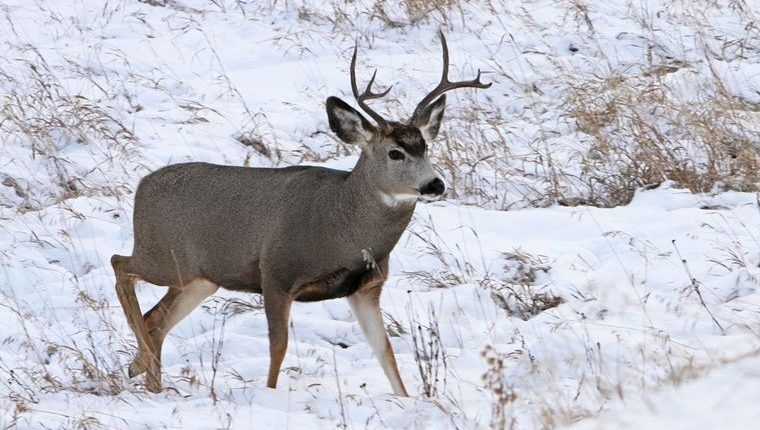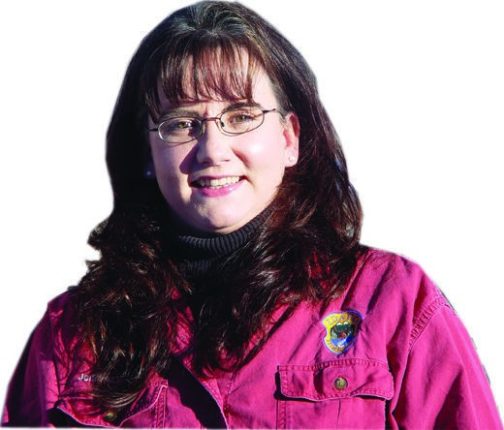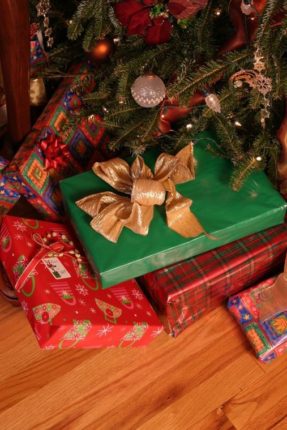The Idaho Department of Fish and Game is very aware of the winter we are having throughout the southeast region, and in spite of the snow and cold temperatures, a winter feeding emergency for big game does not exist at this time.
The decision to feed or not is not taken lightly and is backed by an involved process of information gathering and solid science. That may sound complex, even time consuming, but make no mistake — if an emergency arises, Fish and Game is prepared to immediately begin feeding deer and elk within 24 hours of a decision being made.
That’s because right now there are 20 tons of feed stored in water-tight containers in both Montpelier and Preston, and staff and volunteers are prepared to execute feeding operations if the directive is issued.
Some may say that the Idaho Department of Fish and Game doesn’t care about wildlife, because if we did, we would be feeding right now. The truth is that Fish and Game employees are dedicated, caring people with special places in their hearts for wildlife.
We are connected to the outdoors, the landscape, the wildlife and all the rich traditions that are tied to these cherished resources. If that were not the case, then none of us with Fish and Game would have chosen our careers with this agency. So when a decision is made to not feed deer or elk, rest assured it is not because we don’t care.
What follows is a summary of the feeding program protocols, as well as answers to frequently asked questions about winter feeding.
Who decides if there is an emergency? Who do you contact if you have a concern?
Input from the Winter Feeding Advisory Committee (WFAC) is critical to the winter feeding decision process. Composed of five volunteers representing different regions of southeast Idaho, the WFAC was established about 20 years ago. Members of the WFAC are citizen volunteers who are approved to serve on the committee by the Idaho Fish and Game Commission.
On their own time, these individuals track everything from weather to wildlife movement to landscape conditions, and they serve as sounding boards for citizens in their communities. They communicate with Fish and Game staff on a regular basis. Depending on the winter and issues that arise, meetings or conference calls take place monthly, bi-weekly, even weekly. Communication happens daily if needs be.
The WFAC can make feeding recommendations to Fish and Game for staff consideration. However, the final decision is left to the Fish and Game regional supervisor.
This year’s WFAC members for the southeast region are David Priestley, Preston, 208-339-0227; Dennis Caywood, Montpelier, 208-847-1386 or 208-847-2119; and Sid Cellan, Soda Springs, 208-390-7057
There are currently two vacant positions in Pocatello/Inkom areas. Positions will be filled soon.
The public may call their WFAC representative or the Idaho Fish and Game office at 208-232-4703 with any comments or questions regarding wintering wildlife and feeding concerns.
What factors determine a winter feeding emergency?
Fish and Game personnel and the WFACs in each region of the state have developed a set of criteria that, when met, can trigger a winter feeding emergency.
Factors considered include snow depths, subzero daytime temperatures, crusted snow, animal condition, number of animals, winter range condition and the expected number of days of winter conditions remaining. It often takes a combination of factors for an emergency situation to exist.
It may also be necessary to “bait” animals away from highways or railroads for the safety of people and the animals. “Baiting” is also used to draw animals away from haystacks on private property when other deterrents such as fencing and “hazing” do not work.
The bottom line in making the decision to feed is determining if a period of critical stress has been reached such that significant losses of adult reproductive does will occur, or if extensive property damage situations exist for private landowners.
Why not just feed wildlife?
First, winter conditions are not so much a “lack of feed” issue for game as much as it is a “fat burning” issue. Ongoing research shows that if animals, especially fawns and calves, enter the winter months with a sufficient amount of fat on their bodies and have access to critical winter range that provides refuge from disturbance, cold temperatures and deep snows, then then they can survive the winter months with little feed.
Second, winter feeding of big game is often detrimental to wildlife.
When animals congregate at artificial feeding sites, the transmission of eye diseases, respiratory ailments and brucellosis (in elk) are enhanced.
Concentrated animals compete aggressively for artificial feed even when dispersed properly, often with young animals losing to the adults.
Animals concentrated at artificial feeding sites draw in predators, such as mountain lions and coyotes, because they are able to hunt in one specific area that has consistent prey over time.
Natural forage in the immediate vicinity of a feed site becomes overused and damaged, and may not recover, especially if the same site is used for artificial feeding year after year.
Feed sites can stop animals in their tracks, and prevent them from finishing their traditional migratory routes. Animals will become accustomed to the sites and begin looking for them year after year.
What kind of winter are we having?
According to Idaho SNOTEL data reported by the USDA/NRCS, areas of the southeast region are registering between 149 and 176 percent of normal moisture.
This data is not to be confused with snow levels. Moisture is a measure of water content in snow as well as a measure of rainfall. So even though there are bare hillsides and open areas in fields around Pocatello, for example, we are still sitting at a current snow water equivalent of 165 percent.
Temperatures did drop severely during the first week of January, with some negative double digits reported throughout the region. Recent “warming” trends and rain in parts of the region were certainly welcome. However, that is a recipe for crusting snow, which can be difficult for animals to navigate and paw through.
That being said, deer and elk went into the winter months in very good condition this winter season supported by fall checkstation data and some current, though incomplete, capture data.
Any areas of concern?
The WFAC and Idaho Fish and Game are monitoring daily the snow conditions around the region, making note of areas where wildlife are moving and stationing.
Concerns now are mostly with elk depredations on haystacks and road crossings by elk (especially near Montpelier and Banida). Fish and Game staff is working tirelessly on hazing efforts throughout the region, and baiting operations are starting in the Banks Valley and Dingle areas to deter elk from highways and private property. Other areas being closely monitored include Georgetown Canyon, Montpelier Canyon, and the Dayton-Clifton area.
The WFAC has been in regular contact with staff and our next conference call is Monday to address any issues that may have arisen since our last meeting on Jan. 5.
Again, Fish and Game is monitoring winter conditions and wildlife situations around the region very closely and will implement emergency feeding if deemed necessary.
Jennifer Jackson is the regional conservation educator for the Idaho Department of Fish and Game, Southeast Region.



